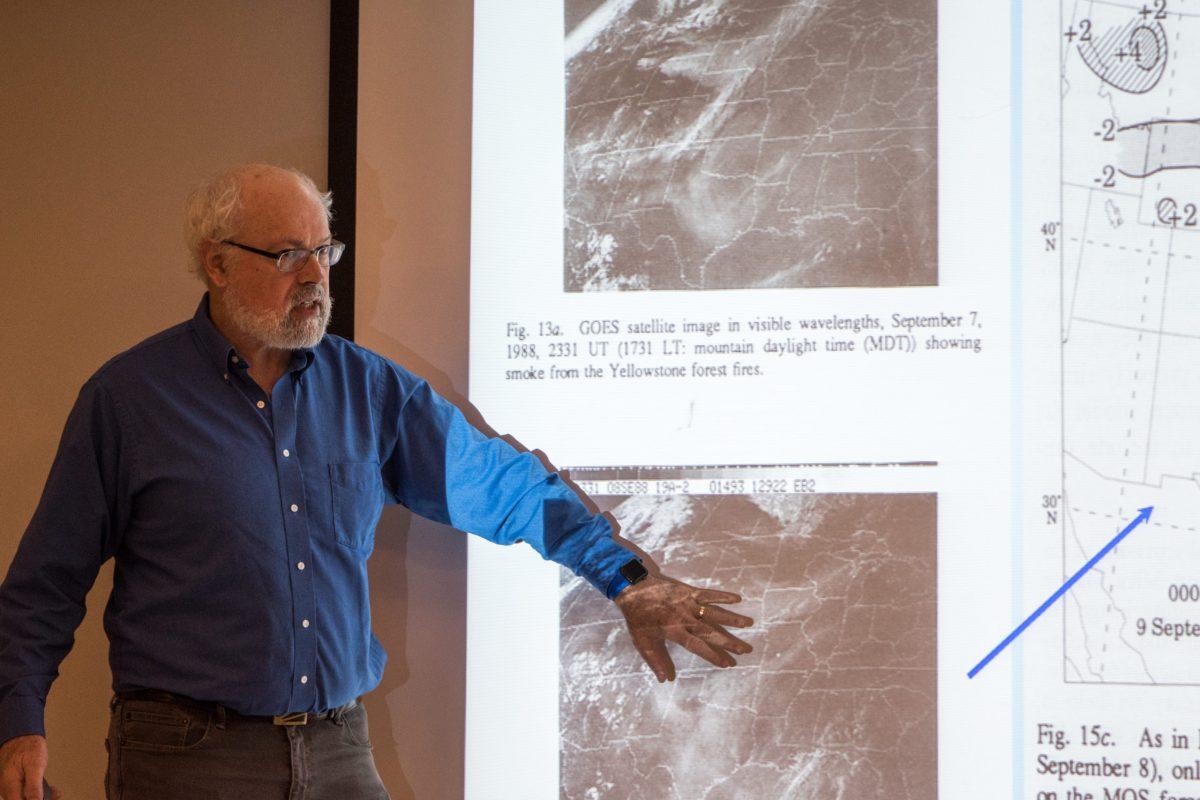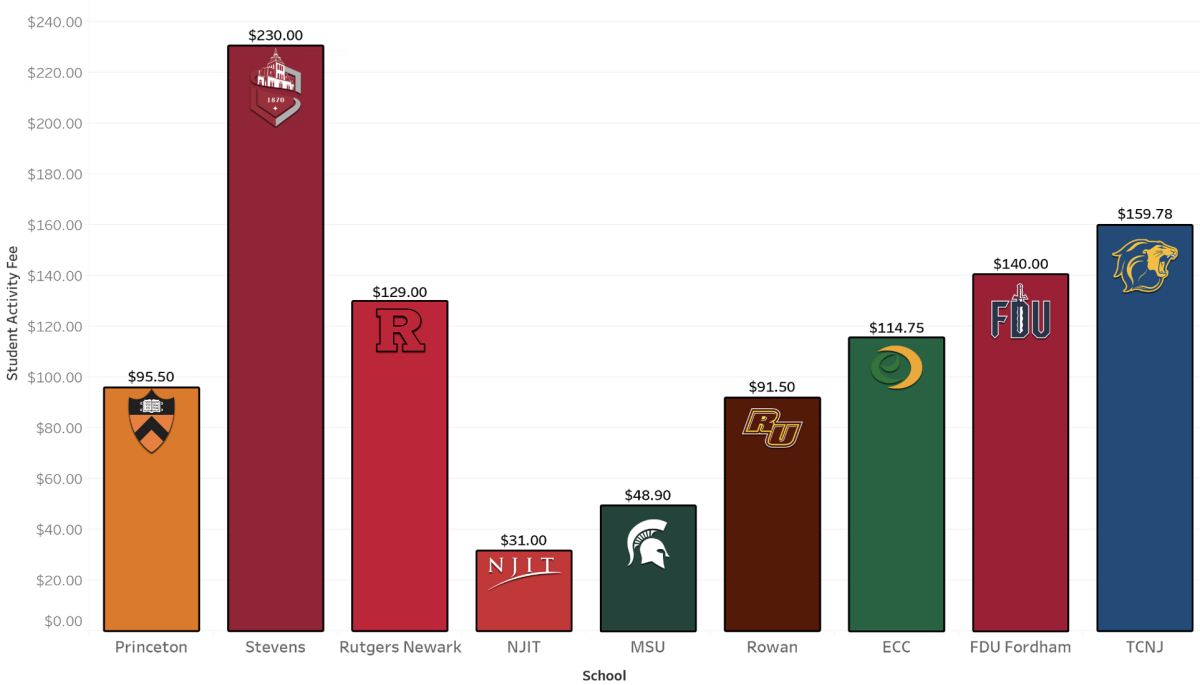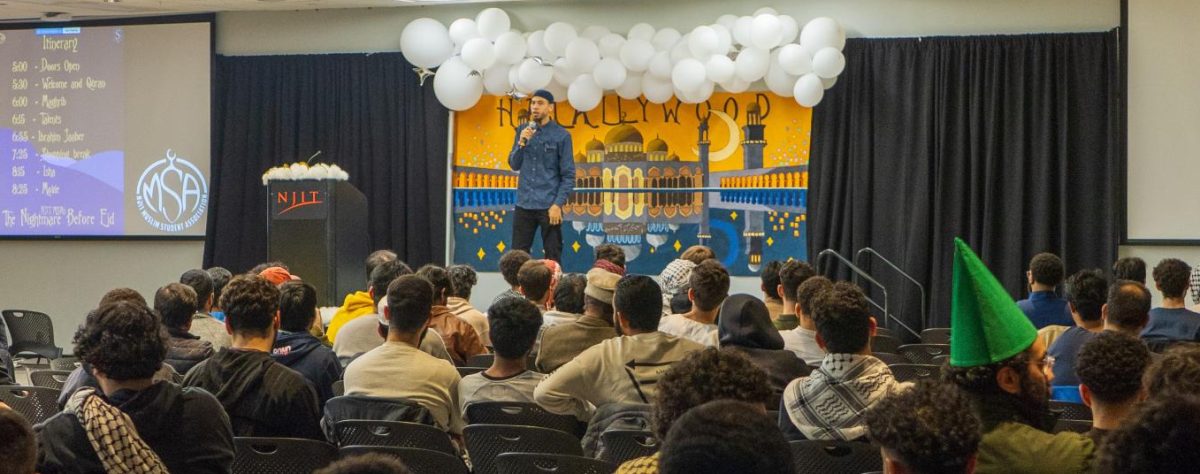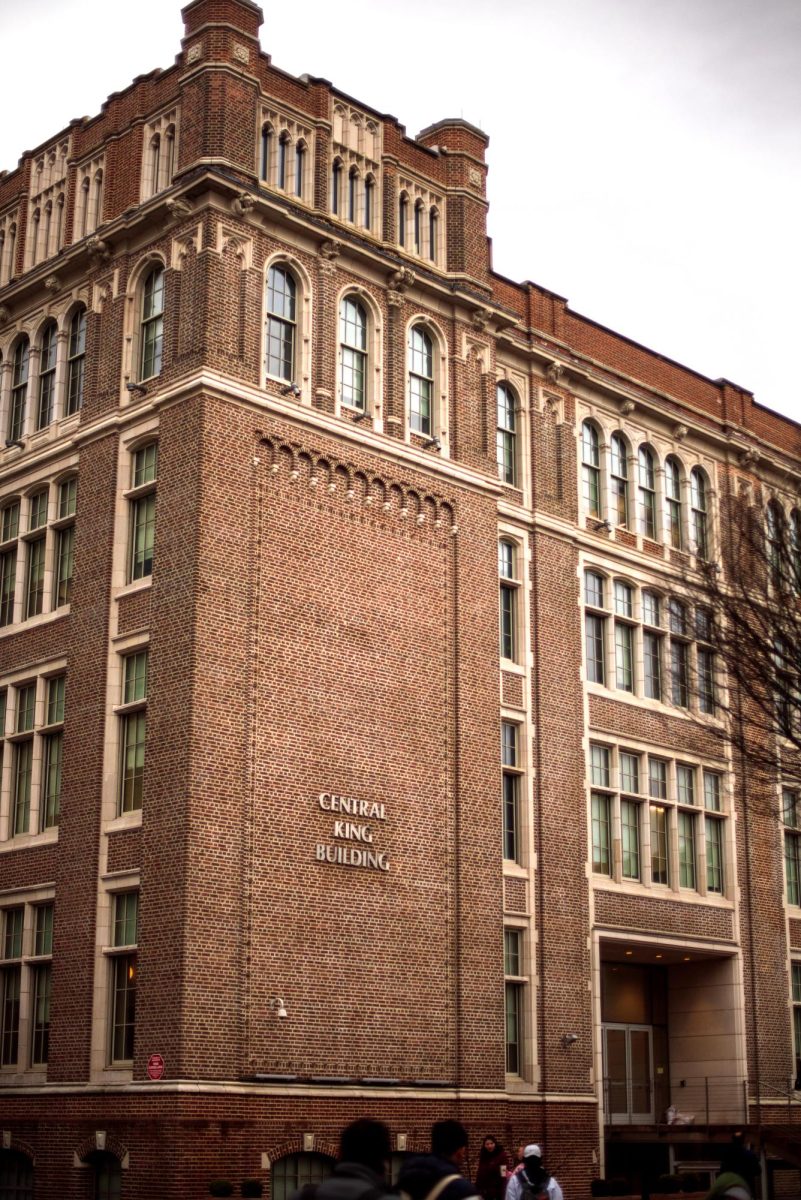On Mar. 25, at one of the pre-conference events held to promote NJIT’s upcoming conference on nuclear war, Alan Robock, Distinguished Professor in the Department of Environmental Sciences at Rutgers University – New Brunswick, presented a frightening scenario concerning our present nuclear policies.
Robock’s research, which goes back to the 1980s, shows that two small countries like Pakistan and India—should they drop 50 Hiroshima-type bombs on each other’s cities—would fill the stratosphere with smoke that would spread evenly across the entire planet, and reduce the growth of crops of at a rate of 20-40% worldwide.
This shortfall would be sustained for at least five years and felt at a lower rate for another five years. This scenario is referred to as “nuclear autumn”. The world could recover to some extent. Food production would continue, but at a reduced rate, and would likely result in worldwide famine.
Despite the enormous destruction wrought on Hiroshima and Nagasaki in 1945, those atomic bombs were only equal to 15 and 20 kilotons of TNT (not to mention the effects of radiation). The arsenals of the United States and Russia now contain hydrogen bombs that have over 50,000 times the explosive power of those bombs.
Robock determined that a similar set of bombs dropped by the United States and Russia on each other’s cities would trigger an actual “nuclear winter”, in which temperatures would drop below freezing in the summer and there would be no chance to grow crops for at least five years. This would result in starvation for most people on Earth.
As a result, the meaning of war must change. An absurd situation now exists whereby an attack on one’s enemy with a small percentage of one’s arsenal in the megaton range ensures both parties will suffer the consequences of nuclear winter. Robock and Brian Toon refer to this as “Self-Assured Destruction (SAD)”.
Another way of putting it is that one Ohio-class nuclear submarine has many times the explosive power to trigger a global climate catastrophe. The United States has 14 nuclearsubmarines of the Ohio class.
So, the question arises: why do the United States and Russia presently have 10,000 nuclear missiles?
As absurd as it is for our two countries to possess so many weapons, in the 1980’s, the United States and Russia had 70,000 weapons. At that point, Presidents Reagan and Gorbachev, of the United States and Russia respectively, decided to destroy two-thirds of their arsenals with the intention of destroying even more in the future.
While the nuclear arms race ended and many weapons were destroyed, these countries still have huge nuclear arsenals. In 2017, the United Nations passed a Ban Treaty in which 122 countries voted to ban all nuclear weapons, for which the International Campaign to Abolish Nuclear Weapons received the Nobel Peace Prize in 2017. Unfortunately, no country possessing nuclear weapons has yet signed the treaty.
What will it take for this new logic to seep in, and eliminate our nuclear weapons?
Come to the Nuclear Conference on Apr. 14 to find out more about the present state of our nuclear policies, and what you can do to lower the level of nuclear threat.
Photo by Akin Aguda































